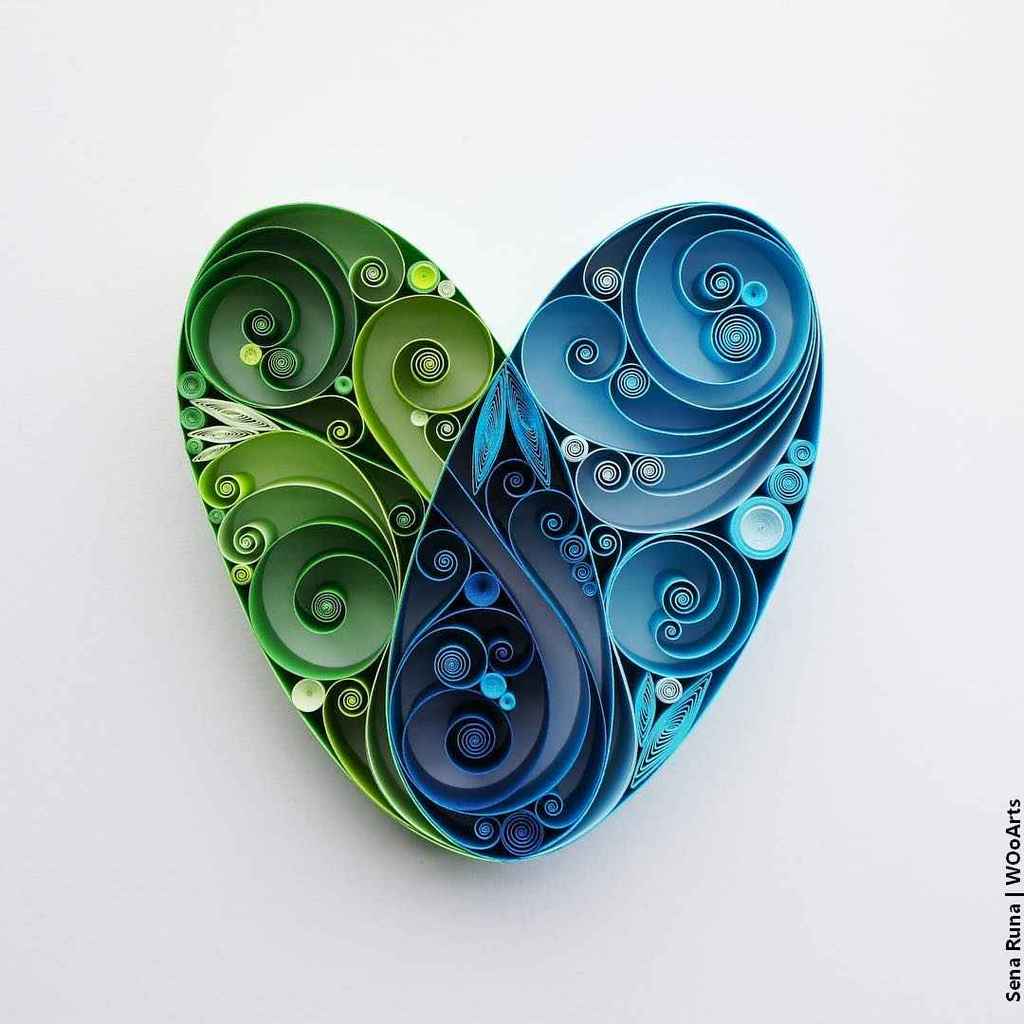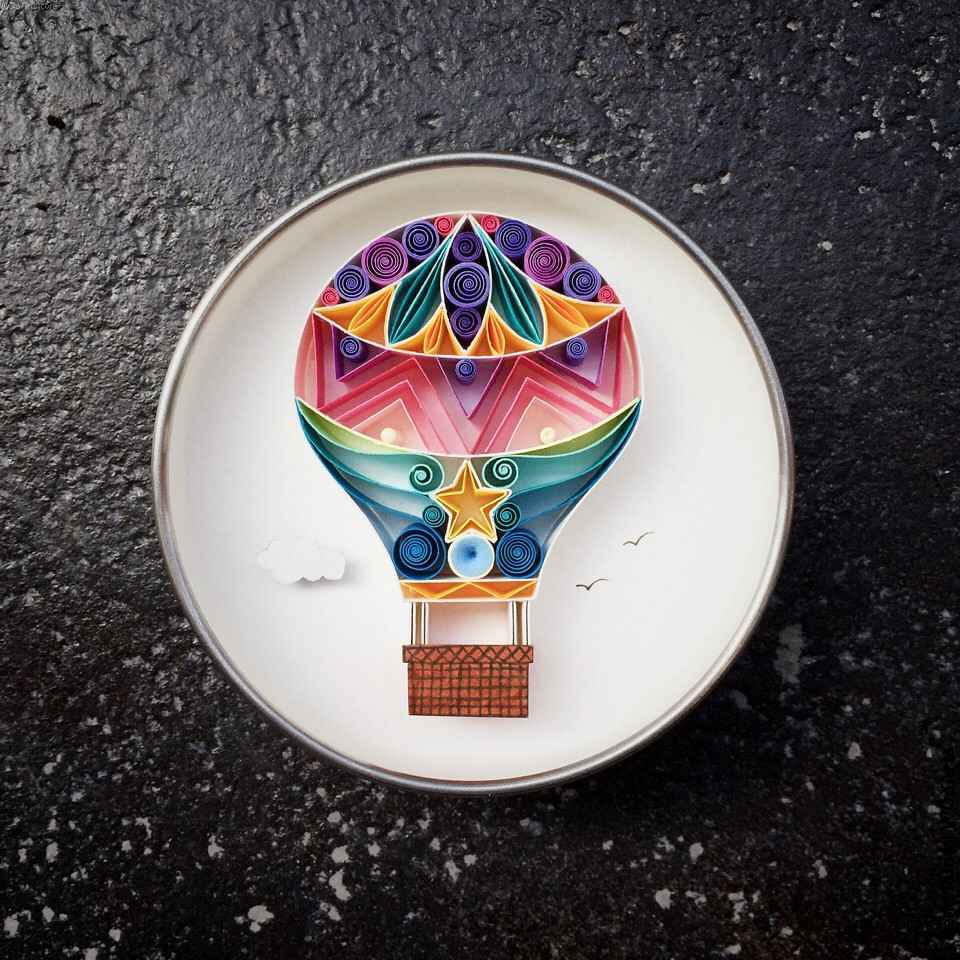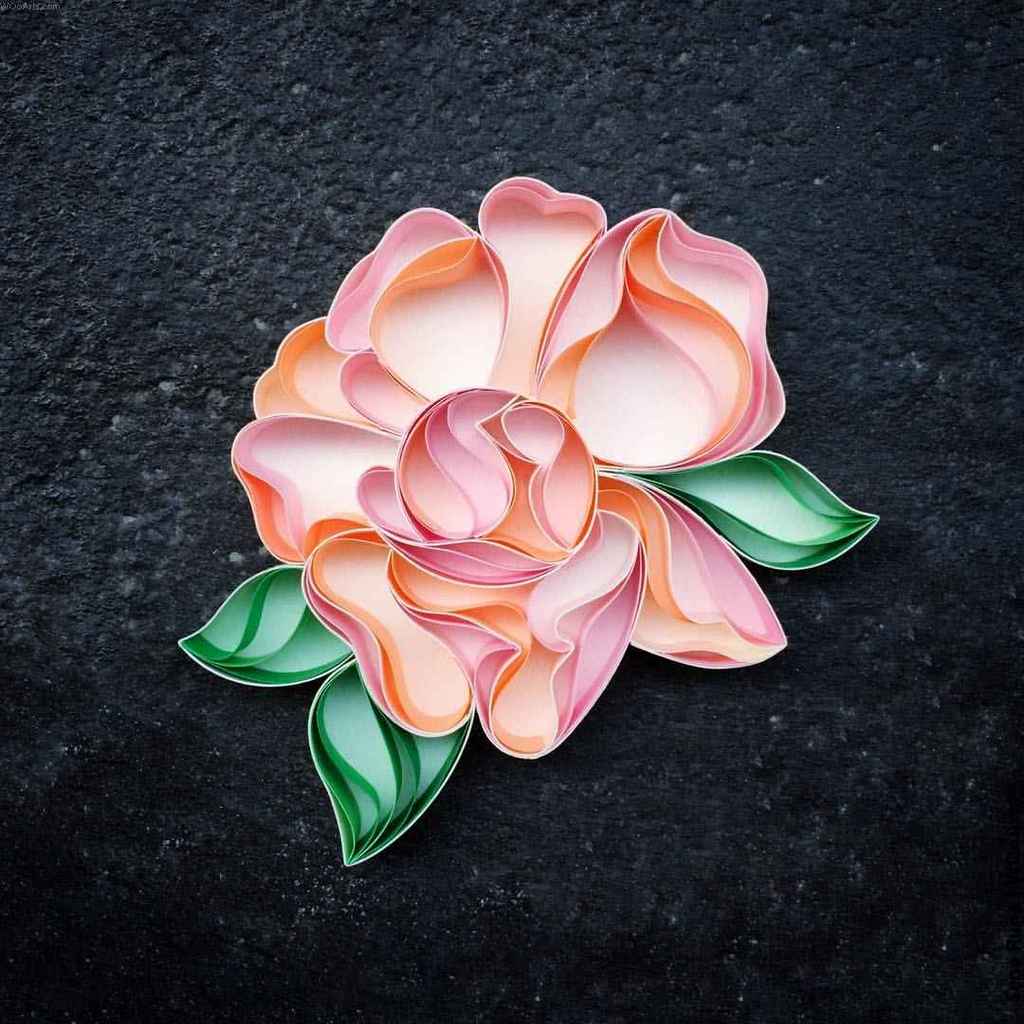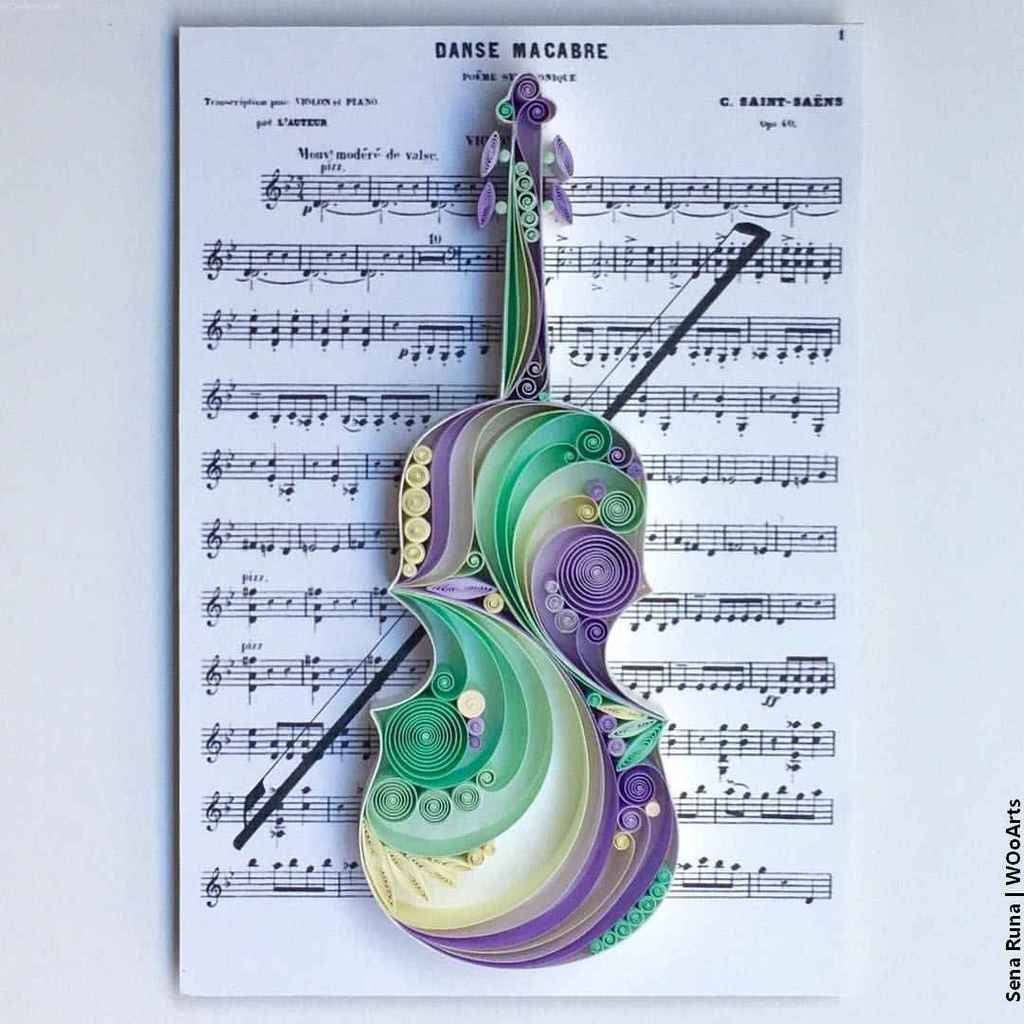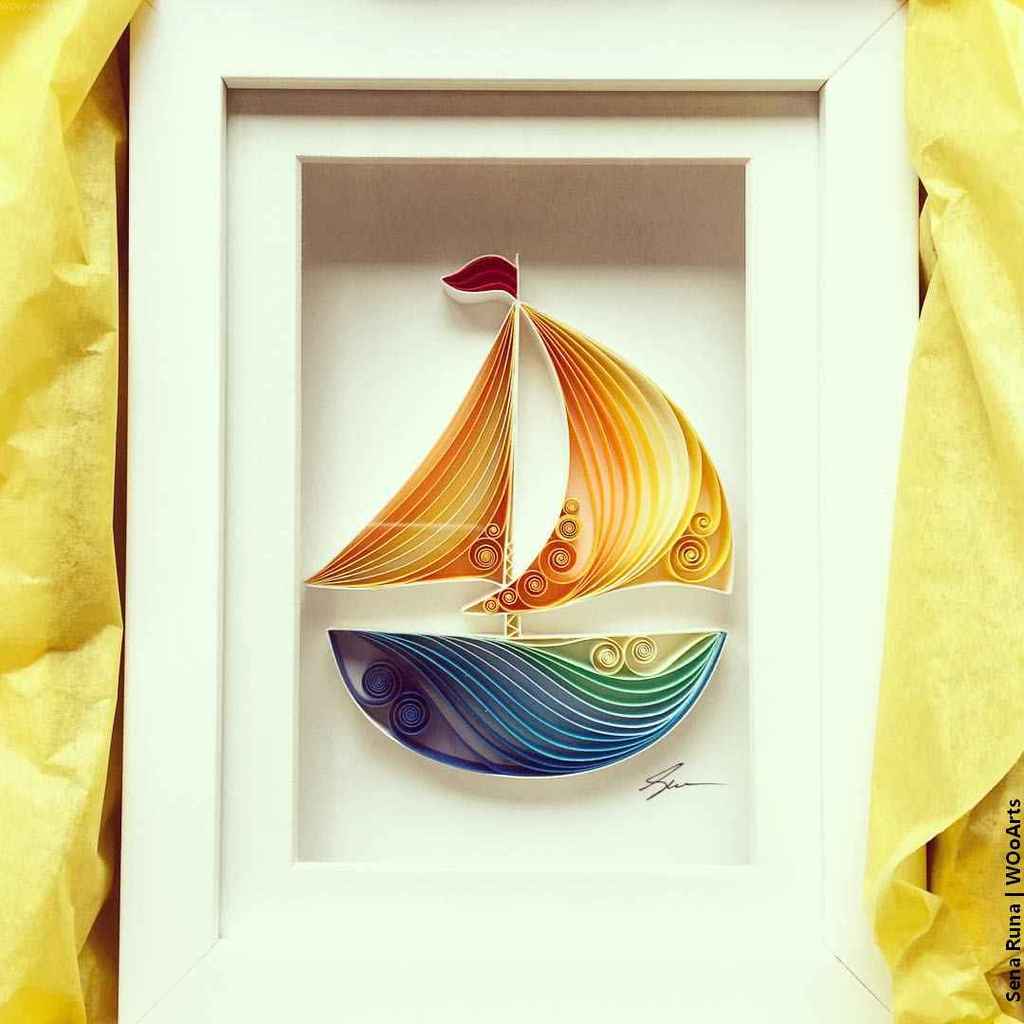I tried to make it, but it turned out awful! Then I explored many quilled creations online, but soon found my own style.
Once I decided to leave the corporate world for good in 2015, I opened a new page in my life and decided to follow the passion of my life, art! In 2017 November, my tutorial book was published by GMC Publications, London, UK.
I am working seven days a week, but I love bringing fruitful colors to the lives of others and I enjoy spreading my joy in many places around the world. With all my love.
Sena Runa was born in Istanbul, Turkey in 1983. After graduating with a BA degree from Marmara University in Istanbul in 2008, she worked as a HR specialist until January 2015. Then she left her job and started designing artworks using paper quilling technique as a full time job.
The Quilling Art
Quilling or paper filigree is an art form that involves the use of strips of paper that are rolled, shaped, and glued together to create decorative designs. The paper is rolled, looped, curled, twisted and otherwise manipulated to create shapes which make up designs to decorate greetings cards, pictures, boxes, eggs, and to make models, jewelry, mobiles etc.
Quilling starts with rolling a strip of paper into a coil and then pinching the coil into shapes that can be glued together. There are advanced techniques and different sized paper that are used to create 3D miniatures, abstract art, and quilled flowers among many things.
History
During the Renaissance, French and Italian nuns and monks used quilling to decorate book covers and religious items. The paper most commonly used was strips of paper trimmed from the gilded edges of books.
These gilded paper strips were then rolled to create the quilled shapes. Quilling often imitated the original ironwork of the day.
In the 18th century, quilling became popular in Europe where gentle ladies of quality (“ladies of leisure”) practiced the art. It was one of the few things ladies could do that was thought not too taxing for their minds or gentle dispositions.
Quilling also spread to the Americas and there are a few examples from Colonial times.
Many quilled art works can be found on cabinets and stands, cribbage boards, ladies’ purses, a wide range of both pictures and frames, work baskets, tea caddies, coats of arms and wine coasters.
Storage boxes, larger than most jewelry boxes with drawers and/or tops that opened, quilled lock boxes, and more popular is quilling jewelry in recent times became a trend for fashion lovers, as they can be very light and easy to carry on them.
Some items were specially designed for quilling with recessed surfaces. Quilling was also combined or married with other techniques such as embroidery and painting.
Today
Quilling is seeing a resurgence in popularity with quillers (people who practice the art of quilling) on every continent and in every walk of life. No longer confined to the “upper classes”, this is a people’s art form and the beauty of the art is always expanding thanks to innovators and rapidly growing number of quillers.
Quilling is great for all ages thanks to the simplicity of the techniques and how relaxing it is. The craft has become increasingly popular due to the low cost of the material. It is used to decorate wedding invitations, for Christmas, birth announcements, greeting cards, scrapbook pages, and boxes.
Quilling can be found in art galleries in Europe and in the United States and is an art that is practiced around the world. One of the most well-known quilling artists in modern times is Russian artist, Yulia Brodskaya.
Accessibility
Quilling is relatively easy to learn compared to most other crafts, and with the resources available today, it can be learned by almost everyone.
Basic quilling techniques can be learned almost anywhere and there are several videos online to teach how to start quilling. There are more exotic styles of quilling that aren’t commonly taught, but can be learned through books that teach the specific style.
Quilling Tools
Slotted tool
The slotted tool is the most important quilling tool as it makes curling coils much easier and faster. The quality of the coil is noticeably higher compared to a coil that was curled with a toothpick or hand. For younger children, it is recommended that a Curling Coach be used with the slotted tool.
Needle tool
The needle tool plays a supporting role in the craft. It is used primarily to apply glue to hard-to-reach areas of the coil or quilling design.
Tweezers
Tweezers are used to make delicate coils to prevent warping and unraveling. They keep the coils the same size which is important when making something with duplicate coils, like flower petals. Tweezers are also helpful in inserting paper in tight spaces.
Circle sizer ruler
The circle sizer ruler is not essential in making coils into a desired size after curling. The ruler on the side is used to measure each strip to ensure they are the same length before curling.
Curling coach
Curling coaches make a great complement tool for slotted tools and are recommended for younger kids and people who like to quill 3D miniatures. It makes curling the strips much faster and easier than if they were curled with just the slotted tool.
Crimper tool
This tool is used to make crimped quilling strips. It helps to create different patterns. it is used to curl the sheets
Paper types
Quilling paper is available on the consumer market in over 250 colors and dimensions. It can be divided into various categories, like solid-colored, graduated, two-tone, acid-free, and other assorted parcels of quilling paper. It is available in various dimensions, such as 1/8”, ¼” and 3/8″ or 3mm, 5mm, 7mm, and 10mm paper parcels.[8] 5mm being the most widely used size.
Acid-Free
As the name clearly indicates this is a paper that is completely acid-free. The quality makes it an outstanding choice for making scrapbooks, rubber stamping, and creating frames for pictures. It assures your project will last a lifetime, without any side effects on the framed picture or album.
Graduated
This type of paper provides an exceptional look to decorative quilling projects. The edges have a solid color that gradually fades to white. When using a graduated paper, a quilling ring begins with a dark shade but ends up being faded to a lighter side. On the contrary, some graduated papers begin as white, or a lighter shade, and then slowly fades into a solid, darker color.
Two-Tone
This is another important type of quilling paper. It is quite similar to the graduated quilling paper in its use. The look consists of a concrete color on one side and a comparatively lighter color on the other side. With two-tone paper the color remains the same, however, the intensity of the color is different. The main use of this quilling paper is to provide a desired level of softness to the quilled subject. It possesses the capacity to quill many papers in a single spiral.
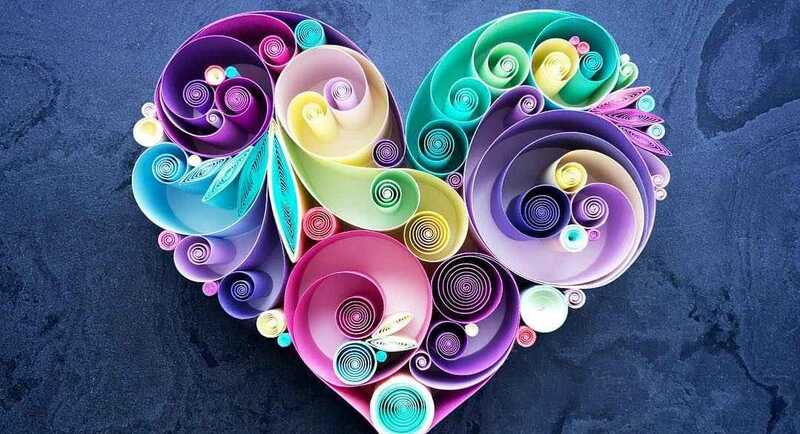
Sena Runa’s Quilling Paper
Sena Runa’s Website
Source: Wikipedia https://en.wikipedia.org/wiki/Quilling

